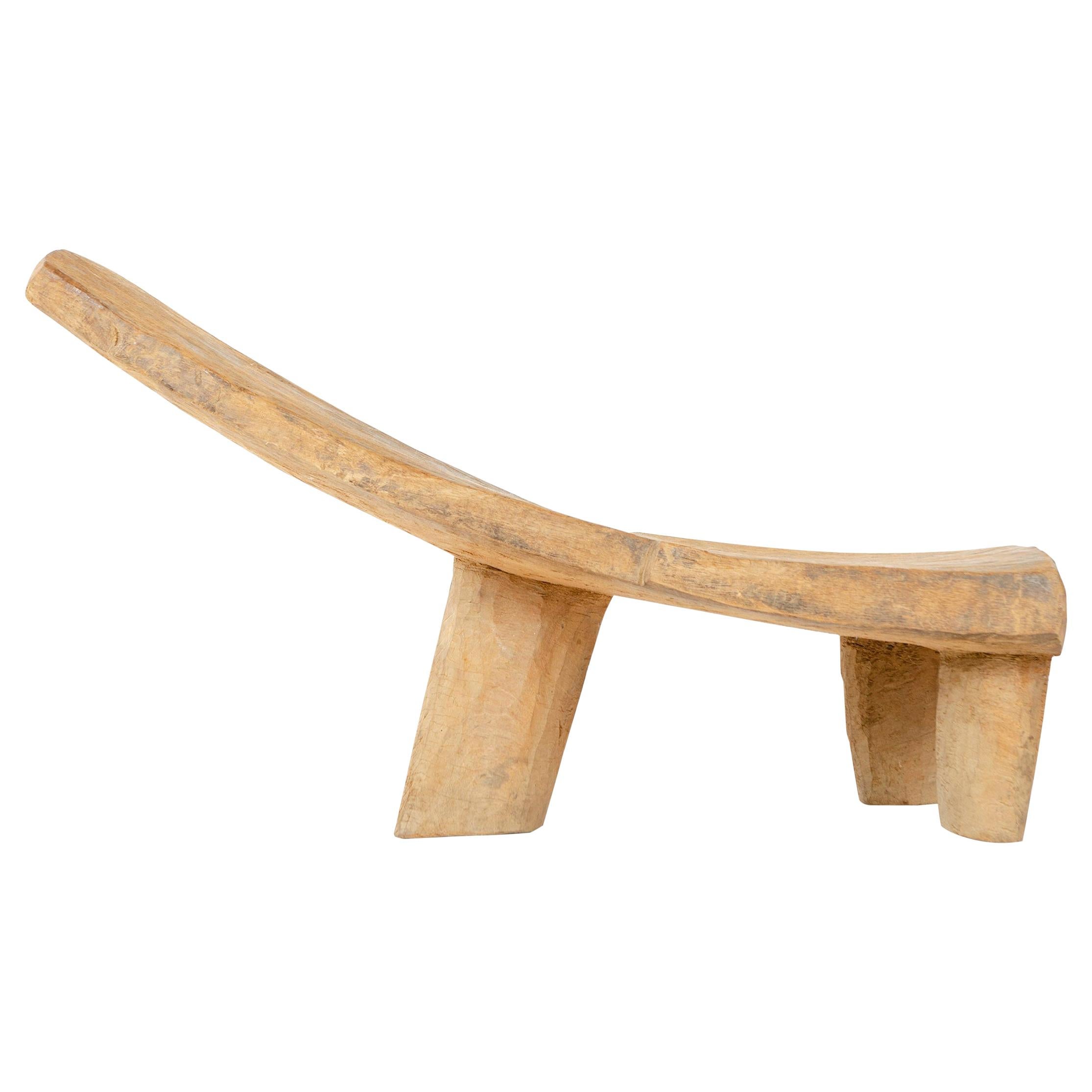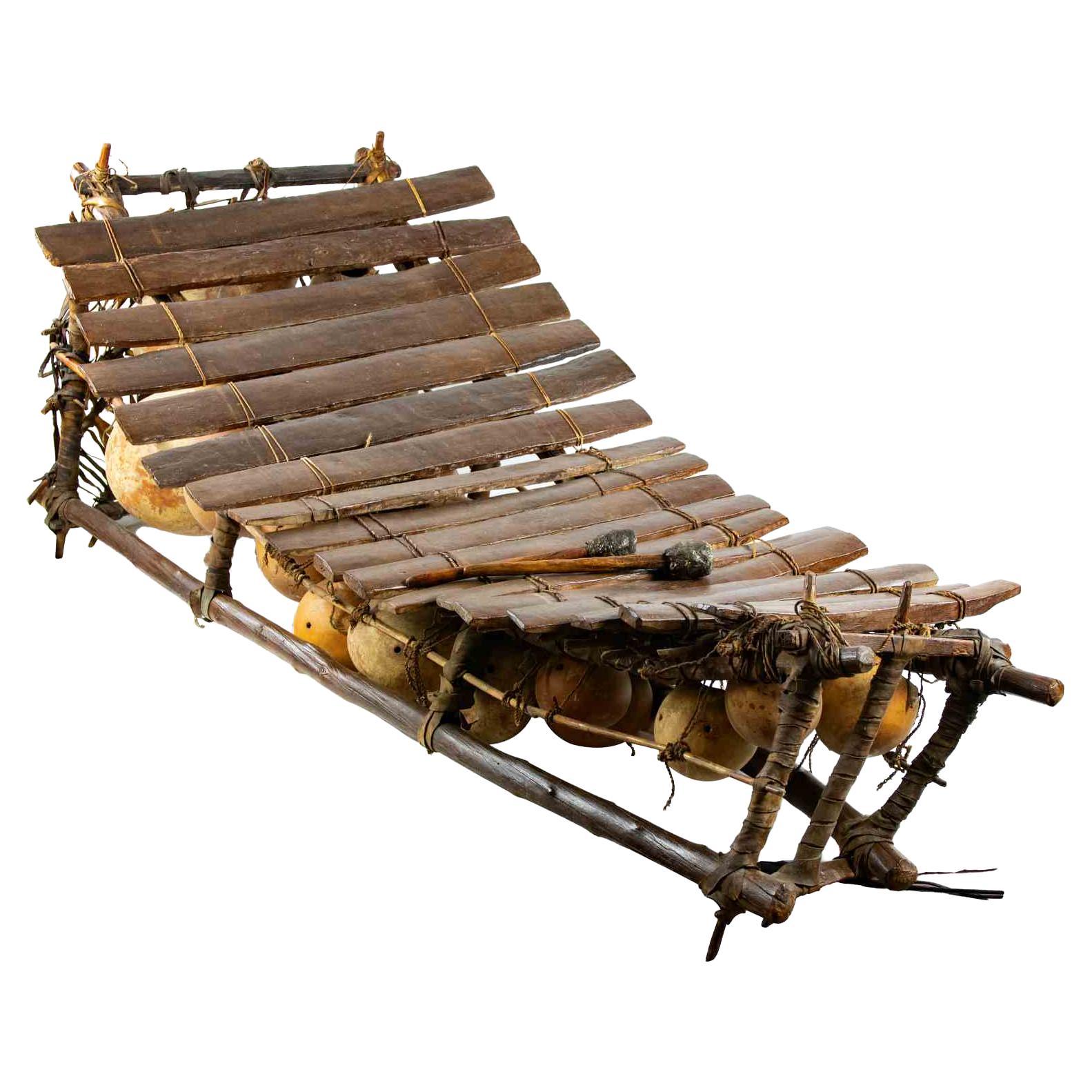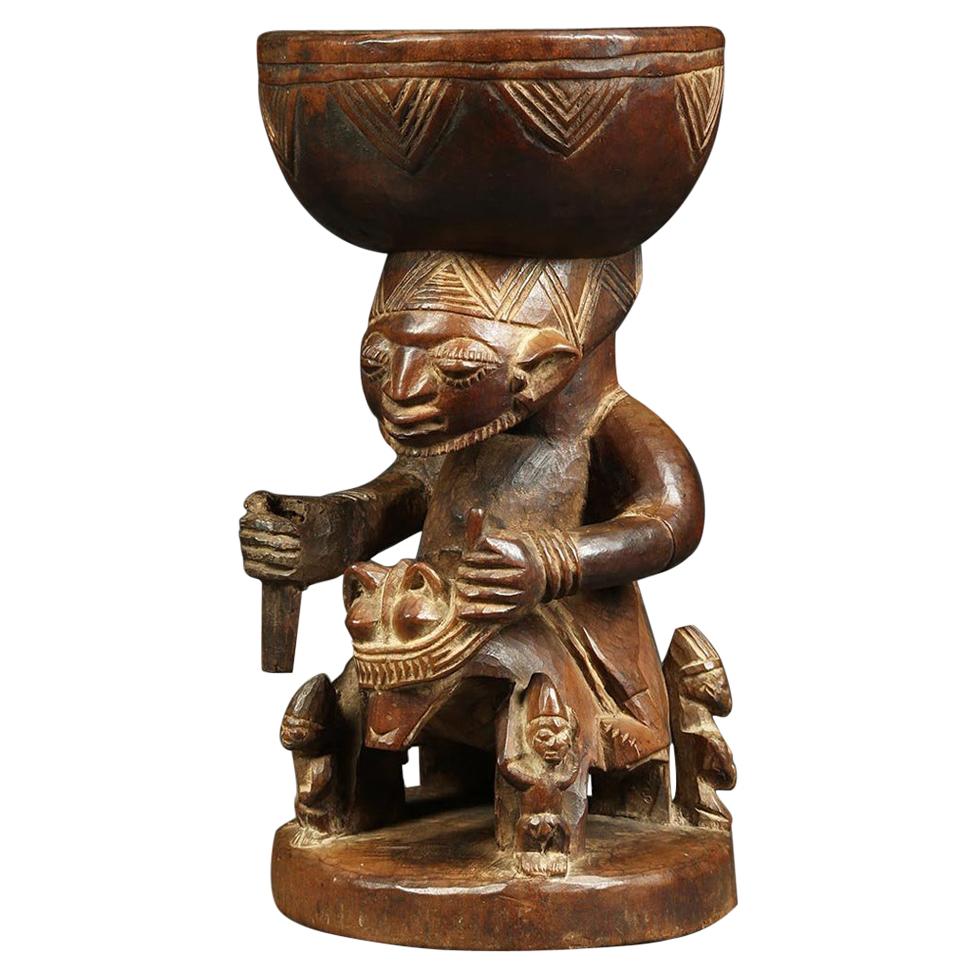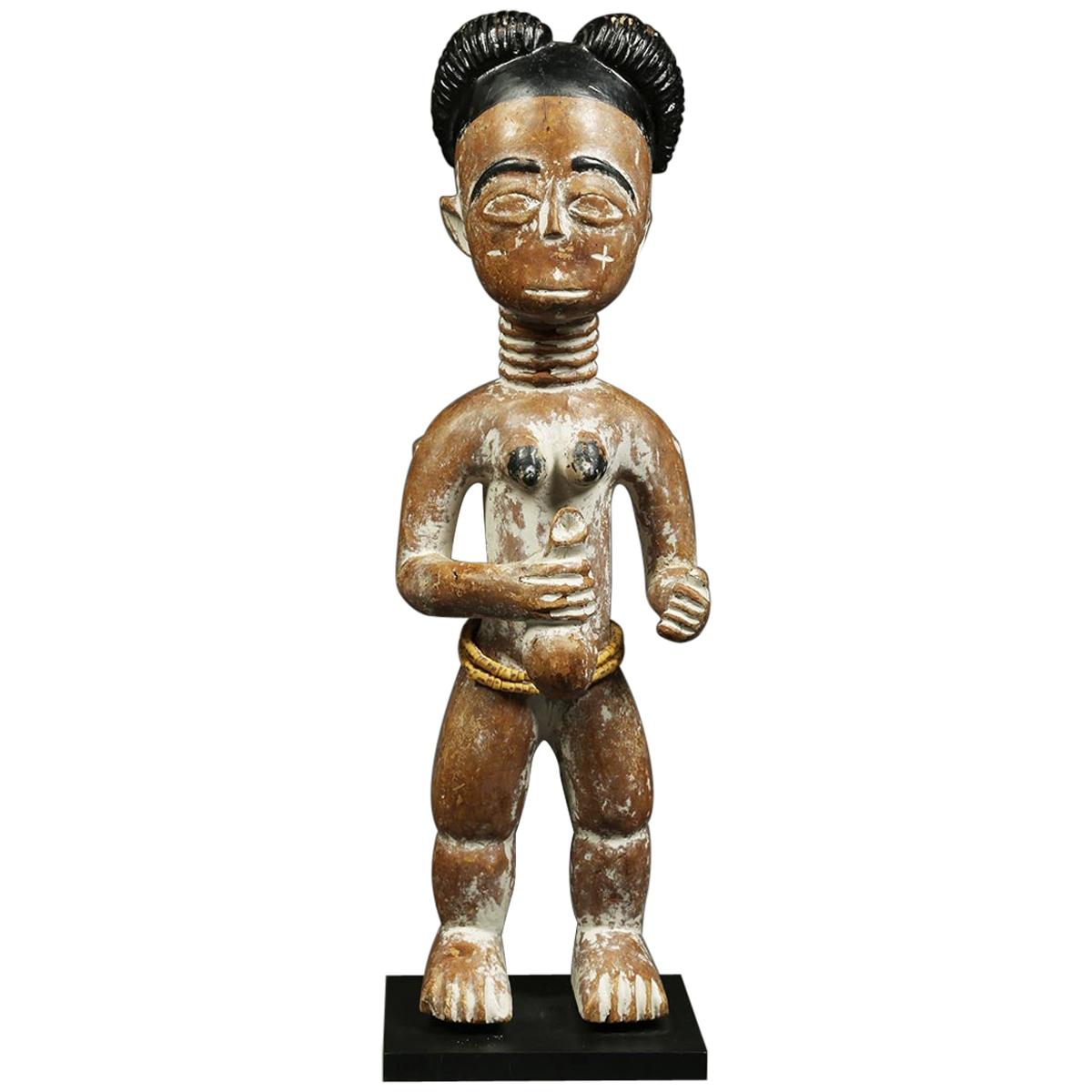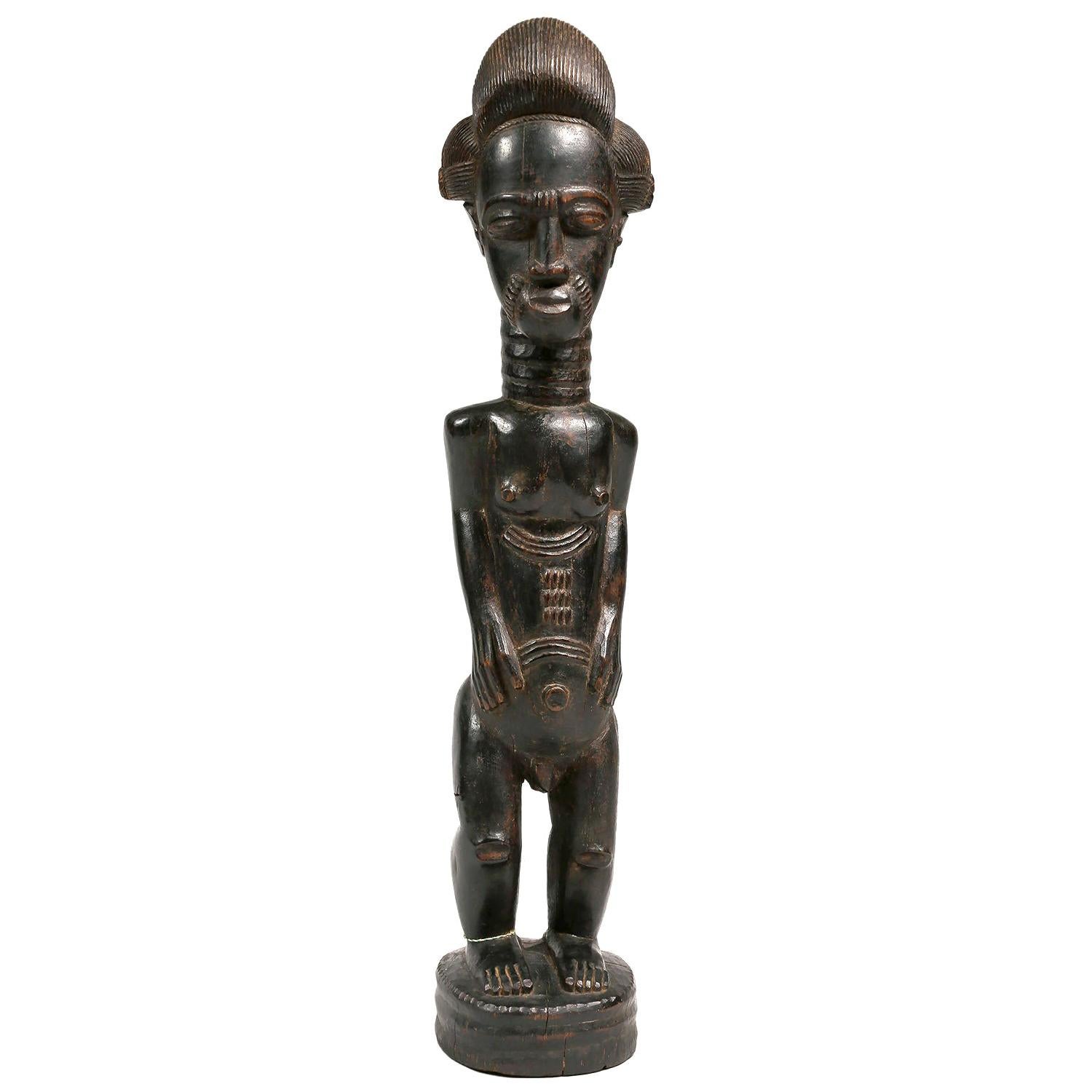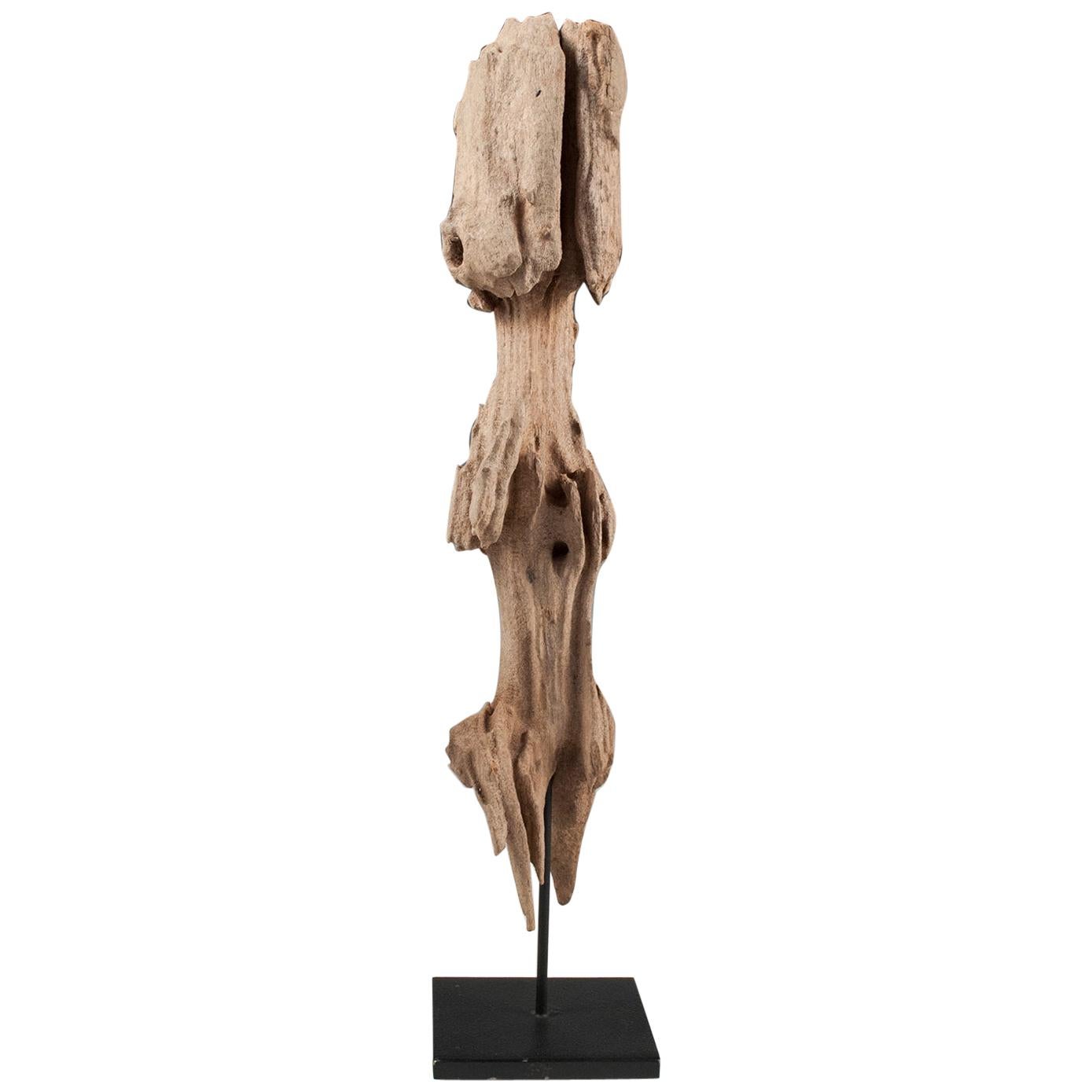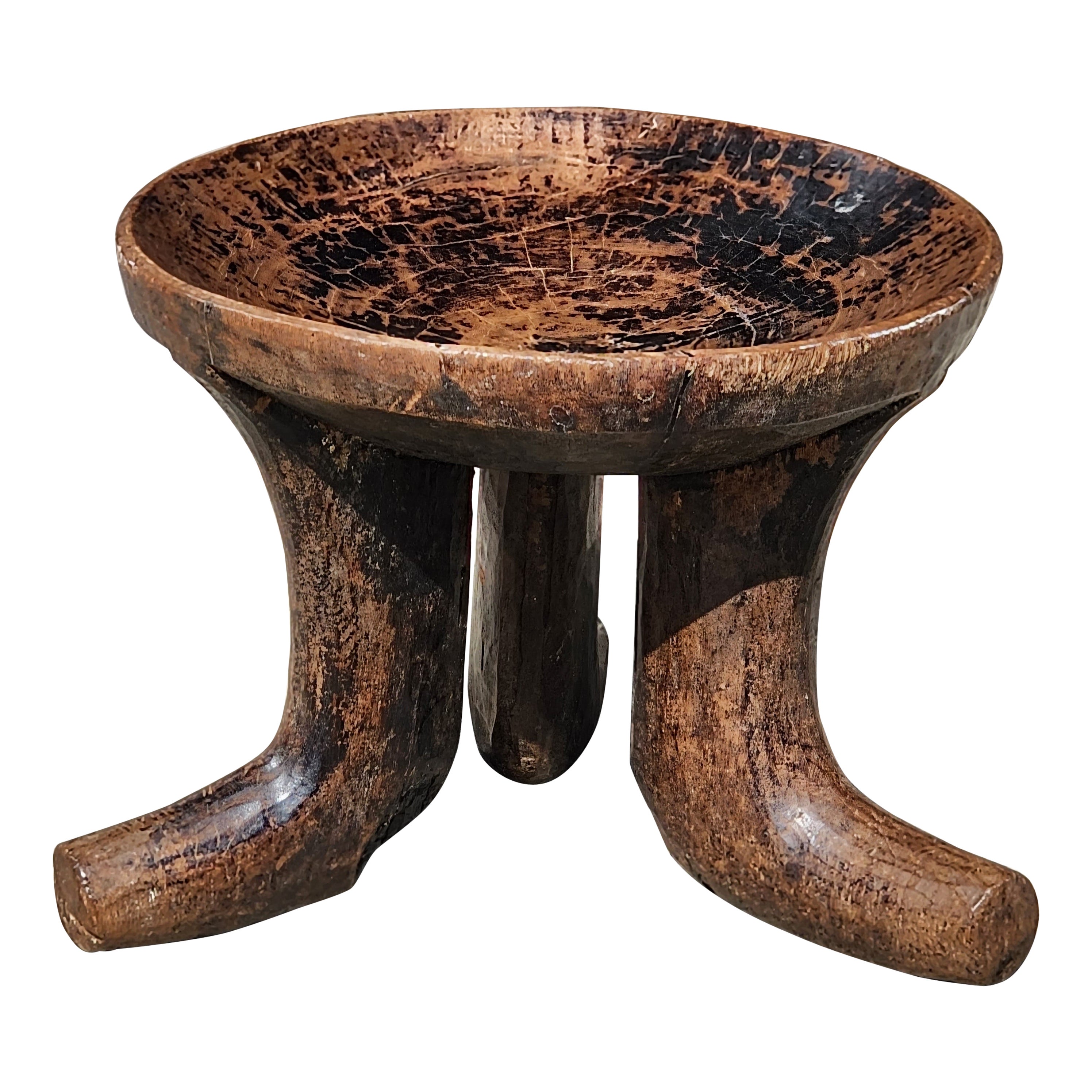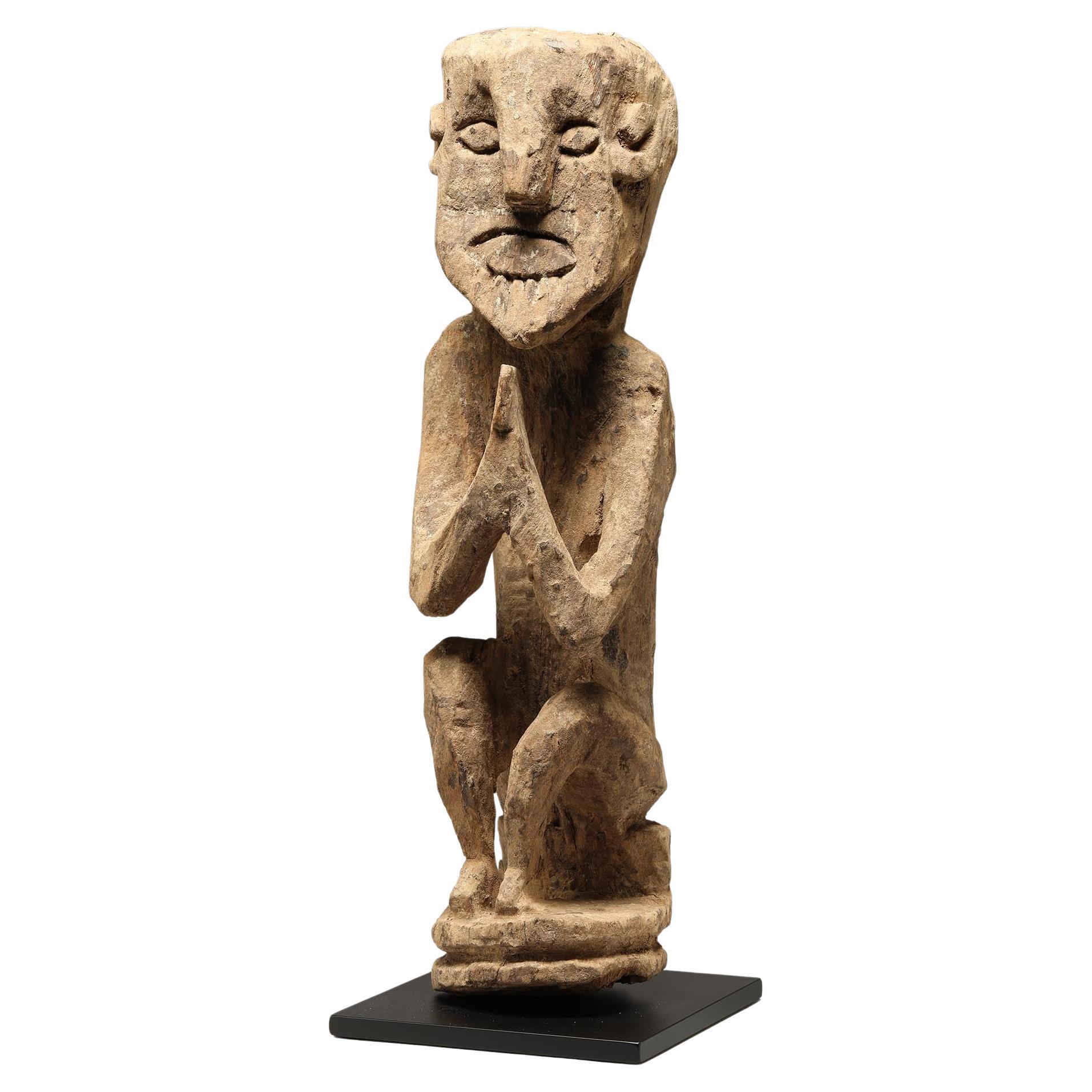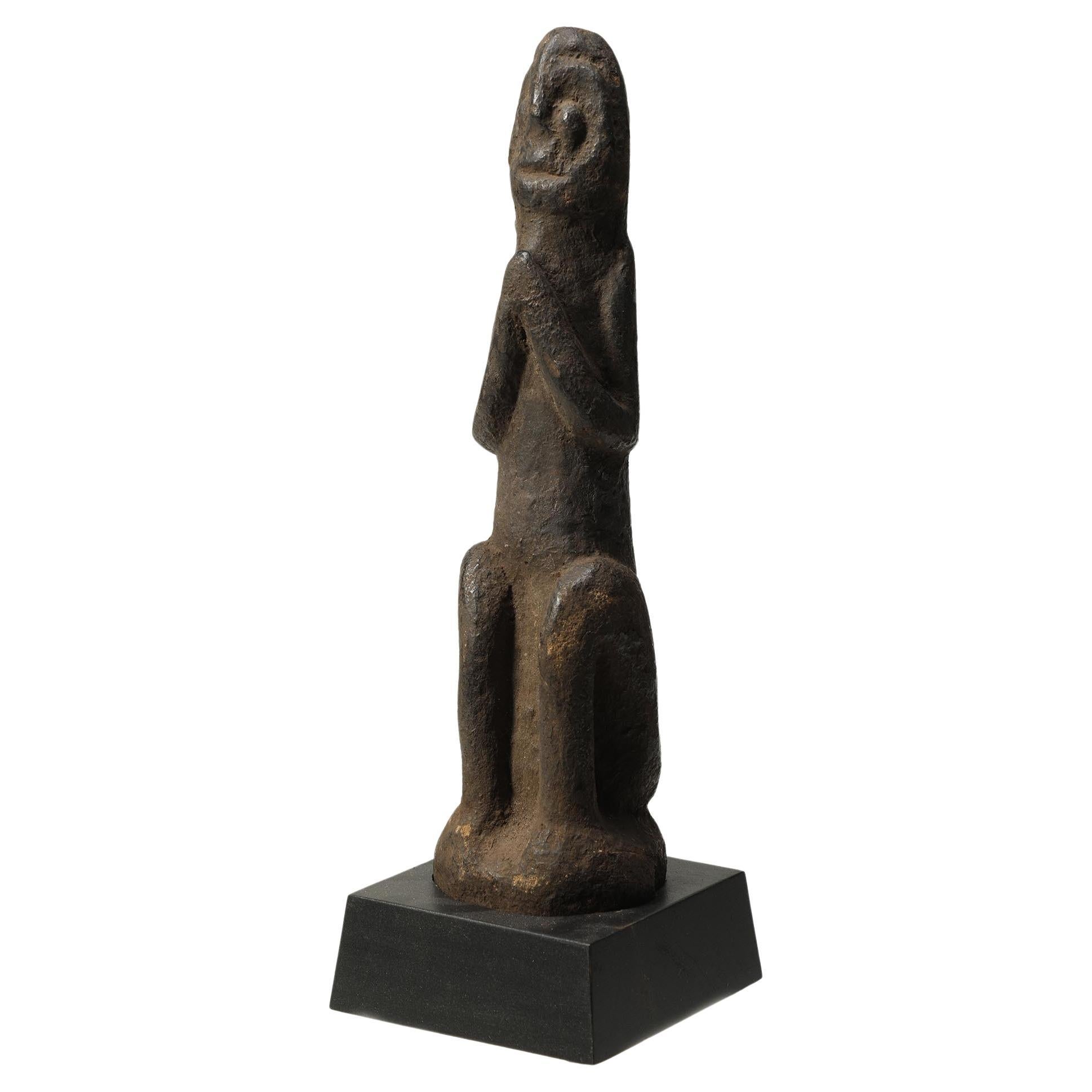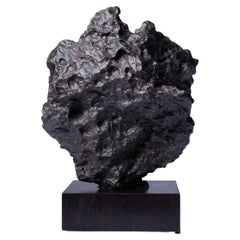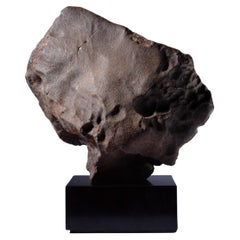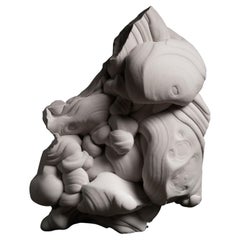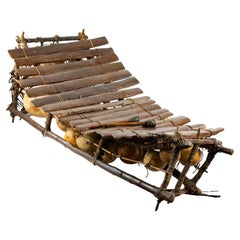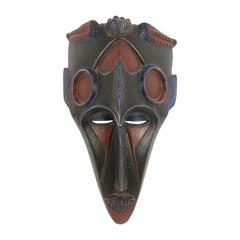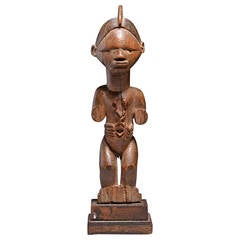
Central African Tribal Wooden Bembe Figure, Early 20th Century
View Similar Items
Want more images or videos?
Request additional images or videos from the seller
1 of 9
Central African Tribal Wooden Bembe Figure, Early 20th Century
About the Item
- Dimensions:Height: 5.5 in (13.97 cm)
- Place of Origin:
- Period:
- Date of Manufacture:1900-1920
- Condition:Minor losses. Unrestored, the feet and arms fragmentary as shown. Displaying a beautiful patina.
- Seller Location:London, GB
- Reference Number:1stDibs: LU105221478982
About the Seller
5.0
Recognized Seller
These prestigious sellers are industry leaders and represent the highest echelon for item quality and design.
Established in 2008
1stDibs seller since 2014
100 sales on 1stDibs
Typical response time: 8 hours
Associations
LAPADA - The Association of Arts & Antiques DealersInternational Confederation of Art and Antique Dealers' AssociationsThe British Antique Dealers' Association
More From This SellerView All
- Sculptural Iron Meteorite from Morasko, PolandLocated in London, GBIron Meteorite from Morasko, Poland Circa 4.55 Billion y/o Iron, IAB-MG A sculptural iron meteorite dating to the formation of the solar system, s...Category
Antique 15th Century and Earlier Polish Natural Specimens
MaterialsIron
- Sculptural Oriented MeteoriteLocated in London, GBOriented Chondrite Meteorite Circa 4.56 Billion y/o Chondrite 24 x 20 cm, 28 cm tall on base 7.1 kg A sculptural and beautifully weathered chondrite meteorite; upon entering the atmosphere, this extraterrestrial stone would have heated the surrounding air to a temperature of over 1700 C, higher than that of the hottest lava on the planet, and enough to melt away its outer layers, leaving its surface rippled with regmaglypts, thumb-shaped impressions formed as superheated rock streaked off of the main body as it careened toward the earth. The last layer of the rock to melt would have re-solidified as the meteorite made impact, forming a charcoal coloured fusion crust, which has taken on a deep ochre-tinted patina. Chondrite meteorites such as this example were formed at the very beginning of our solar system, by the accretion of various types of dust and small grains, adrift in the vacuum of space and, as such, provide important clues about the birth of our own planet. This piece is an especially rare specimen, known as an oriented meteorite...Category
Antique 15th Century and Earlier Natural Specimens
MaterialsStone
- Natural Gogotte FormationLocated in London, GBA magnificent example of a gogotte formation composed of thick swirls and folds of sparkling sandstone. Discovered in the Oligocene sand dunes of Fontainebleau, France, formed circa 30 million years before present or later. The incredible, almost otherworldly appearance of gogottes may easily be mistaken for the work of a most talented artist. In fact, these sandstone sculptures are entirely natural in origin. They have been found in multiple locations but those from Fontainebleau, such as the present example, are the most remarkable. Thirty-five million years ago, a sea covered what is now the forest of Fontainebleau, and dunes of exceptionally fine and homogenous sand formed. As silica-rich water filtered through this sand, it turned into stone. The flow of water finely modelled the sandstone into the aesthetic concretions we now know as gogottes. These are rare and are only found sporadically several metres deep into the ground. They owe their sparkling white appearance to the extreme and unmatched purity of the Fontainebleau sand, sometimes reaching a composition of 99.9% silica. Each of them is unique – a masterpiece slowly fashioned by the hands of Nature. The intriguing name of “gogotte” was coined by French geologist Claude Guillemin (1923- 1994), who was inspired by the children’s book series Babar the Elephant. In one of the books, a group of monsters called Gogottes are shown hiding behind rocks. These rocks reminded Guillemin of the sandstone concretions...Category
Antique 15th Century and Earlier Natural Specimens
MaterialsOther
- Oriented Stone MeteoriteLocated in London, GBOriented Stone Meteorite Chondrite 5.00 kg Detached from its parent body by a mighty impact, this large, oriented Meteorite travelled over a hu...Category
Antique 15th Century and Earlier North African Natural Specimens
MaterialsStone
- Ancient South Arabian Alabaster InscriptionLocated in London, GBSouth Arabian Alabaster Inscription Calcite Alabaster circa 1st century A.D. ‘’Consequently, neither white marble of Paros nor any other stone which men admire can be compared with the precious stones of Arabia, since their whiteness is most brilliant, their weight the heaviest, and their smoothness leaves no room for other stones to surpass them.’’ - Diodorus Siculus, Library of History, Book II, 52.9 This inscription, finely worked on an alabaster tablet, is a remarkably well preserved example of Ancient South Arabian script, with its distinct bold, angular forms, written in the Qatabanic dialect - that is, the dialect spoken by the people of the kingdom of Qataban, which ruled much of modern day Yemen from the 7th Century B.C. to the 2nd Century A.D. The text, which reads: ‘[... ...]sa?d and Ma?add?i- / (of the lineage) of Hawfa- / She entrusted Anb- / against any malfeasance (which would remove it) from its place’ - indicates that it likely served to commemorate a temple offering. The quality of the script, incised so neatly into the surface of the alabaster, tells us that this piece was commissioned by somebody of considerable wealth and prestige, employing a scribe of equally considerable expertise. South Arabia was known throughout the ancient world for its incredible wealth - so much so that the Romans termed the region ‘Arabia Felix’ - literally, ‘Happy, or Fortunate, Arabia.’ That wealth was built largely on the trade of spices and incense, in which the Kingdom of Qataban played a major part. According to Pliny the Elder, this was the sole country through which frankincense could be exported, first being collected in the city of Shabwa, on the South Arabian coast, and from there travelling by camel up to Gaza, to be shipped all across the Mediterranean - not only that, but all growers of myrrh across Arabia were required to give a quarter of their yield to the king of the Qatabanians. As such, the kingdom became exceedingly rich and powerful, and Pliny goes on to tell us that ‘The nations of the Larendani and the Catabani, and the Gebanitæ [...] occupy a great number of towns, the largest of which are Nagia, and Thomna (the capital of Qataban) with sixty-five temples, a number which fully bespeaks its size.’ Because of the nature of its exports, frankincense in particular - the ‘sweat of of the gods’ according to the Egyptian Book of the Dead, and perhaps most famous as one of the three gifts brought to the newborn Christ - being closely associated with the divine, South Arabia’s reputation in antiquity was as a mysterious, almost sacred, and - crucially - extraordinarily wealthy region, at the very edge of the known world; in the words of Herodotus: ‘’Enough of marvels, and yet the land of Arabia gives off a scent as sweet as if divine.’’ This inscription invokes the protection of god Anbay, the judge-oracle of the chief god ‘Amm, who he served as an attendant. Much of what we know of the religious life of the ancient South Arabians comes to us from early Islamic texts, describing what is known in Islamic scholarship as ‘Jahiliyyah’ - the age before the advent of Islam in Arabia. What comes across in much of these texts is that these religious practices placed a great deal of emphasis on sacred stones, perhaps linked to the brilliance of the alabaster which is local to the region, and which a great many of the cult-objects produced in this time are made from. Hisham ibn-Al-Kalbi’s Book of Idols records: ‘’The Arabs were passionately fond of worshipping idols [...] Whenever a traveller stopped at a place or station in order to rest or spend the night, he would select for himself four stones, pick out the finest among them and adopt it as his god, and use the remaining three as supports for his cooking-pot.’’ This inscription was once in the collection of the intrepid British-Australian travel...Category
Antique 15th Century and Earlier Yemeni Abstract Sculptures
MaterialsAlabaster
- Roman Marble Head of a SatyrLocated in London, GBHead of a Satyr Roman, circa 2nd - 3rd century AD Carved and highly polished marble An extremely fine marble head of a satyr, depicted with ivy wreath, curly hair and pointed goat’...Category
Antique 15th Century and Earlier Busts
MaterialsMarble
You May Also Like
- Early 20th Century African Tribal ChairLocated in Sagaponack, NYA low slung African stargazer chair carved from one piece of wood, having three (3) legs.Category
Early 20th Century African Tribal Tribal Art
MaterialsWood
- Tribal Xylophone, Africa, Early 20th CenturyLocated in Roma, ITTribal xylophone is an original design item realized in the early 20th Century. A rare xylophone entirely realized in wood. Working. A unique decorative object and at the same ...Category
Early 20th Century African Tribal Art
MaterialsWood
- West African Tribal Mask, Early 20th CenturyLocated in Melbourne, VictoriaA highly decorative carved wood West African tribal mask decorated in blue and red polychrome colours on a black ground. In very good condition wi...Category
Early 20th Century African Sculptures and Carvings
MaterialsWood
- African Tribal Yoruba, Nigeria Rider Figure Offering Bowl Early 20th CenturyLocated in Point Richmond, CAEarly Yoruba offering bowl in the from of a male figure with a beard riding on horse back surrounded by four small attendants, finely carved with nice patina from native use. Probabl...Category
Early 20th Century Nigerian Tribal Tribal Art
MaterialsWool
- Standing Akan Ghana Tribal Female Figure Early 20th Century Africa, Black HairLocated in Point Richmond, CAAkan, Ghana, shrine figure, a standing female figure with black hair and details, remains of white pigment, with arms out holding a bottle, includes custom metal base. Probably a fig...Category
Early 20th Century Ghanaian Tribal Tribal Art
MaterialsWood
- Early 20th Century Male Baule Figure, Ivory Coast, AfricaLocated in Point Richmond, CAEarly 20th century male baule figure, ivory coast, Africa A stylistically pleasing sculpture of a spiritual spouse (blolo bian) from the Baule culture....Category
Early 20th Century Ivorian Other Tribal Art
MaterialsWood
Recently Viewed
View AllMore Ways To Browse
African Wooden Figure
Ancestor Figure
Coiffure Antique
Carved Ancestor Figure
African Earings
African Tribal Wooden Sculpture
Female Wooden Carving
Wooden Tribal Figures
African Figure Carving
Antique Scarifier
Congo Carving
Congo Figure
Antique African Wooden Sculptures
Paste Crescent
Vintage African Beads
Antique African Figure
Antique Tribal Mask
African Carved Art 19th Century
